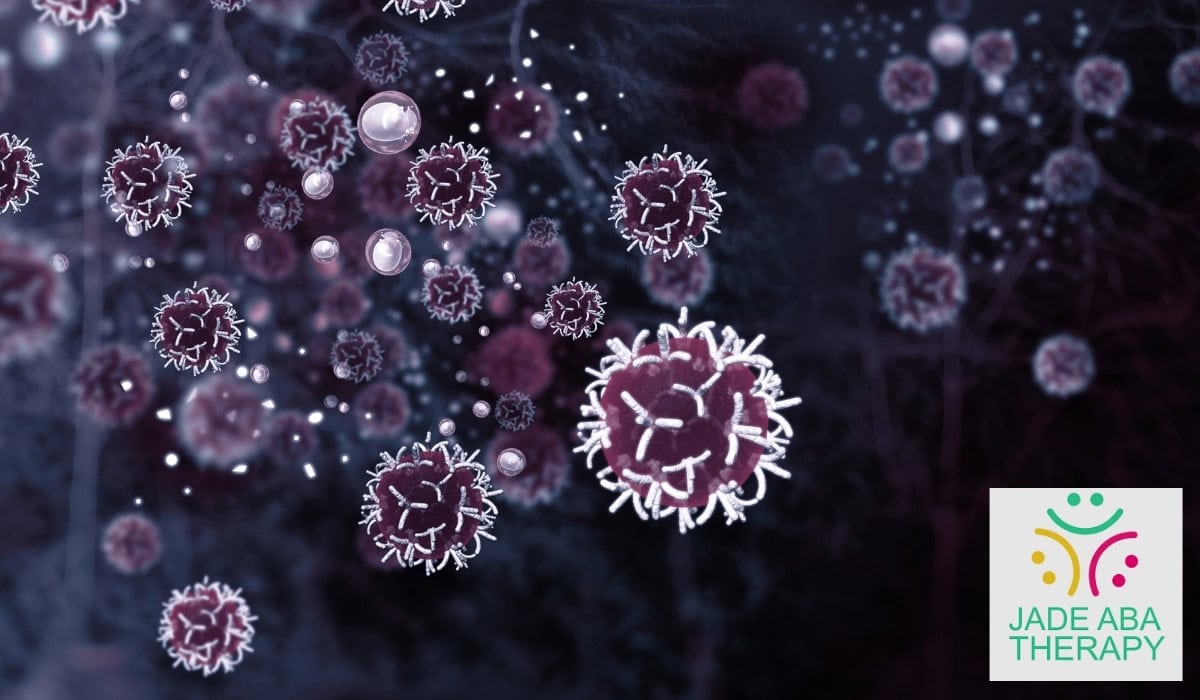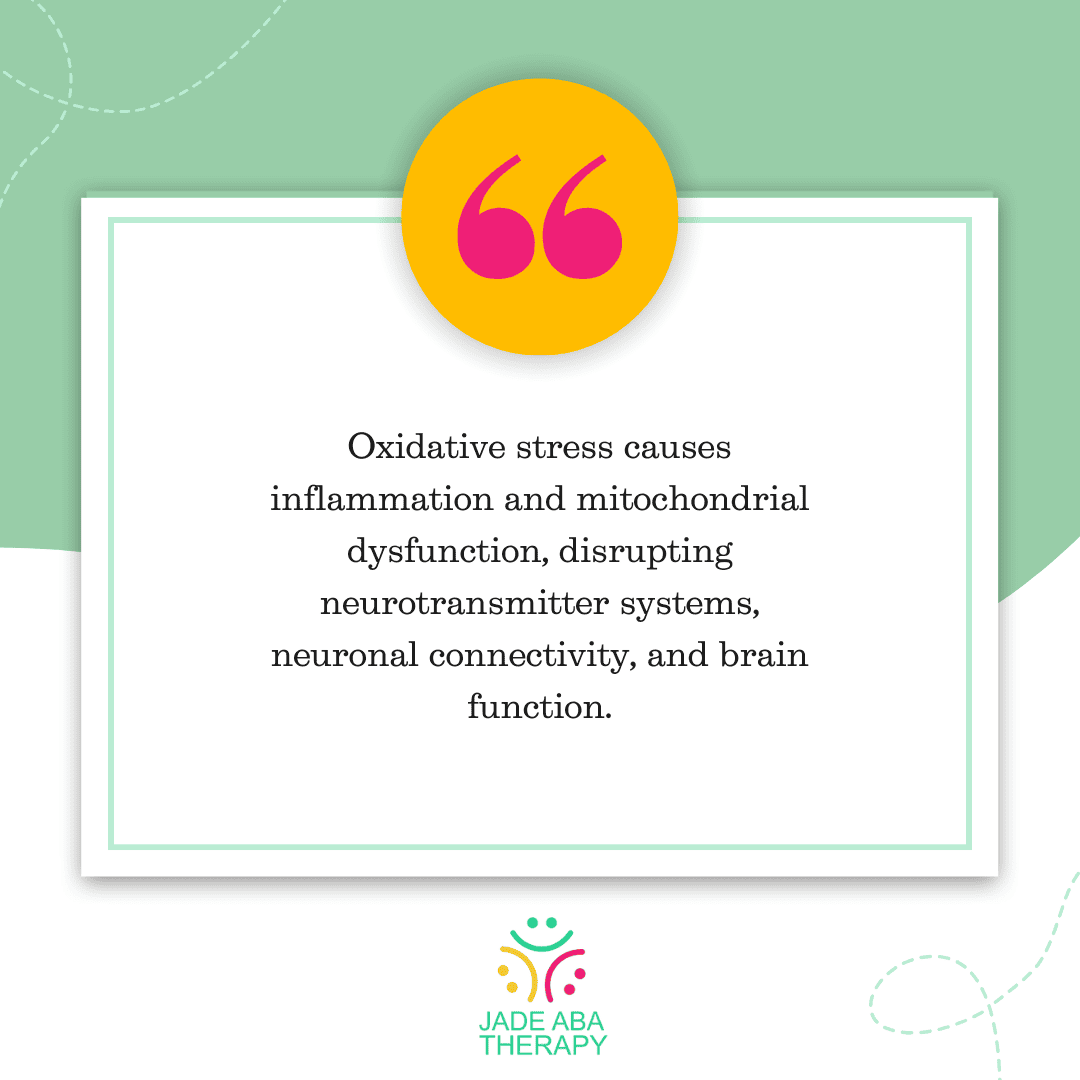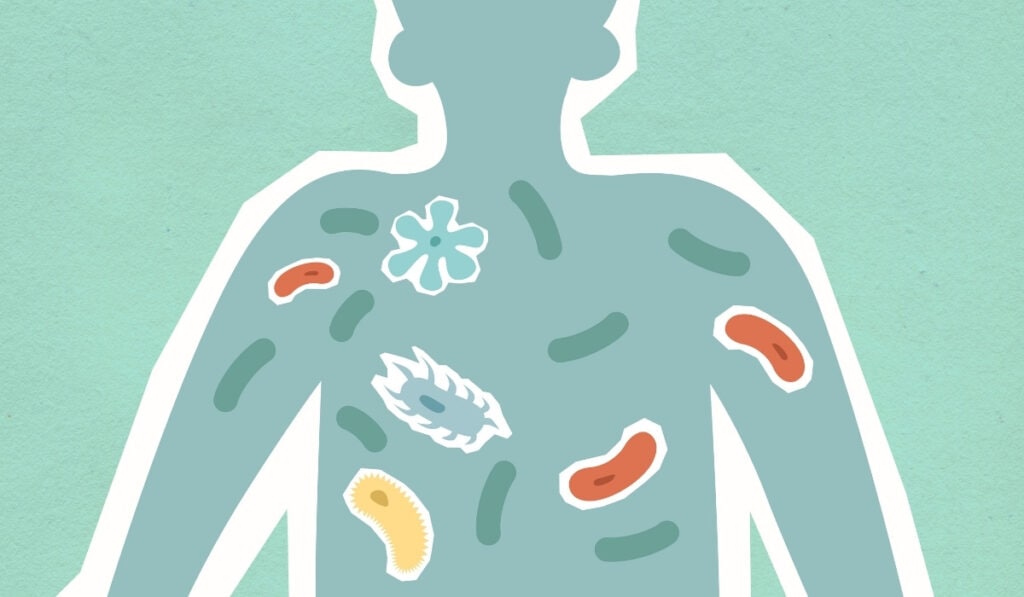Oxidative stress refers to an imbalance between free radicals, specifically reactive oxygen species, and antioxidants in the body. When the production of reactive oxygen species exceeds the body’s ability to counteract their harmful effects, it results in oxidative damage to cells and tissues.
This condition has significant implications for overall health and is linked to various disorders, including autism spectrum disorder.
Numerous studies have highlighted that individuals with autism often exhibit elevated levels of oxidative stress, which potentially plays a role in the development and severity of the condition.
Role of Oxidative Stress in Autism
Research has established a connection between oxidative stress and the pathogenesis of autism spectrum disorder. Oxidative stress is believed to contribute to epigenetic dysregulation, mitochondrial dysfunction, and neuroinflammation, all of which can impact neurodevelopment.
Several factors contribute to elevated oxidative stress in autistic individuals, including abnormal metabolism and the accumulation of toxic substances. These changes can lead to neurodysfunction and cerebral injury, which may be seen in some individuals on the autism spectrum.
That said, some of the key factors that contribute to oxidative stress in autism include:

- Elevated ROS production
- Decreased antioxidant capacity
- Mitochondrial dysfunction
A thorough investigation into oxidative stress in autism reveals its complexity and implications.
Biomarkers such as glutathione levels are crucial in identifying the oxidative state within individuals with autism. Variability in glutathione levels presents opportunities for exploring antioxidant therapies in managing symptoms associated with autism.
Understanding these connections will aid parents and caregivers of individuals with autism in considering dietary and lifestyle interventions aimed at mitigating oxidative stress.
Biomarkers of Oxidative Stress in Autism
Understanding biomarkers of oxidative stress can provide insights into oxidative stress in autism. Two key biomarkers are glutathione and homocysteine, which have been extensively studied in individuals with autism spectrum disorder.
Glutathione (GSH) is a critical antioxidant that plays a significant role in cellular protection against oxidative stress. In autistic patients, GSH has been identified as a biomarker of oxidative stress, and its levels can vary significantly.
Some studies have reported elevated levels of GSH in the blood of autistic individuals compared to healthy controls, while others have found lower levels.
The GSH/GSSG (glutathione disulfide) ratio is essential for assessing oxidative stress levels. A consistent finding across studies is that this ratio serves as a reliable indicator of oxidative stress in autism.
Homocysteine (Hcy) is another important biomarker associated with oxidative stress and has been observed at higher levels in the blood and urine of individuals with autism. Elevated Hcy levels may affect metabolic pathways and are linked to the pathophysiology of autism.
High levels of homocysteine in children with autism have been correlated with various factors, including abnormal methionine circulation, changes in trans-sulfur metabolism, and alterations in DNA methylation processes.
Monitoring the levels of glutathione and homocysteine can aid in understanding the implications of oxidative stress in autism and potentially guide dietary and therapeutic interventions.
Lipid Peroxidation in Autism
In individuals with autism spectrum disorder, specific markers of lipid peroxidation have been identified. Elevated levels of these markers indicate oxidative stress and potential cellular dysfunction related to autism.
The primary markers linked to lipid peroxidation in autism include:
- Malondialdehyde (MDA), a byproduct of lipid peroxidation; elevated levels suggest increased oxidative stress.
- 4-Hydroxynonenal (4-HNE), a reactive aldehyde formed from the breakdown of polyunsaturated fatty acids; high levels indicate lipid damage and a potential link to autism.
Studies show that both MDA and 4-HNE are found in increased concentrations in the blood and brain tissues of individuals with autism. These findings support the hypothesis that lipid peroxidation plays a role in the oxidative stress observed in autism.
That said, the presence of elevated lipid peroxidation markers such as MDA and 4-HNE may have significant implications for the pathogenesis of autism. These markers suggest that oxidative damage to lipids could disrupt critical cellular processes, leading to neurodevelopmental issues.

This interplay between lipid peroxidation and oxidative stress could be a contributing factor to the developmental challenges faced by individuals with autism.
In summary, the assessment of lipid peroxidation markers provides valuable insights into the oxidative stress in autism, highlighting potential areas for dietary intervention and management strategies aimed at reducing oxidative damage and its effects on neurodevelopment.
Mitochondrial Dysfunction in Autism
Mitochondrial dysfunction plays a significant role in the context of autism spectrum disorder and is closely linked to oxidative stress.
Mitochondria are essential organelles responsible for generating energy in cells. In individuals with autism, mitochondrial dysfunction can lead to the overproduction of reactive oxygen species (ROS).
Elevated ROS levels contribute to oxidative stress by surpassing the body’s ability to neutralize these damaging molecules through antioxidants.
Several factors are associated with this imbalance, including:
- Increased production of harmful molecules that can damage cellular components
- The inability of the body to counteract oxidative stress effectively
- Impaired function of mitochondria, affecting energy production and leading to further ROS generation
Together, these factors create an environment where oxidative stress thrives, potentially exacerbating symptoms and challenges faced by individuals with autism.
The relationship between oxidative stress and neurodevelopmental disorders, including autism, is well-documented. Oxidative stress contributes to several adverse outcomes, such as:
- Epigenetic dysregulation, which affects gene expression without changing the underlying DNA sequence
- Neuro-inflammation, which can lead to chronic inflammation within the brain
- Cerebral injury, which may impact the overall structure and function of the brain
- Neuro-dysfunction, contributing to behavioral and cognitive challenges commonly associated with autism
These interconnected issues illustrate how mitochondrial dysfunction and oxidative stress can play a critical role in the development and manifestation of autism. Understanding these connections may offer insights into potential dietary and therapeutic interventions aimed at mitigating oxidative stress in individuals with autism.
Final Thoughts
Oxidative stress appears to play a key role in the biological processes behind autism spectrum disorder. From disrupted antioxidant systems and elevated reactive oxygen species to biomarkers like glutathione and homocysteine, the evidence points to a complex link between oxidative damage and neurodevelopment.
Lipid peroxidation and mitochondrial dysfunction further deepen our understanding of how cellular stress may impact brain function in autistic individuals.
Identifying these patterns helps us move closer to finding supportive strategies that could help reduce oxidative stress and improve overall well-being in those with autism. At Jade ABA Therapy, we take pride in offering personalized, evidence-based care tailored to each individual’s needs. Our team provides compassionate, high-quality autism services in Maryland designed to support lasting progress and meaningful outcomes.
If you’re looking for trusted support, contact us today to learn how we can help your child thrive.
Sources:




